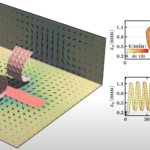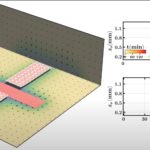News, Scientists Use ‘Swarmalation’ to Design Active Materials for Self-regulating Soft Robots
In nature, organisms that swarm such as birds and fish are able to coordinate their locations relative to the other birds or fish in their swarm, allowing them to act as one large unit. Other organisms like fireflies are able to coordinate their temporal behavior, allowing them to eventually flash their lights on and off at the same time as each other. It is not common for an organism to be able to coordinate both its spatial movements and temporal behavior. An example, however, is the Japanese tree frog. Taking inspiration from organisms that can coordinate both their spatial movements and temporal behavior, such as the Japanese tree frog, chemical engineers at the University of Pittsburgh designed “a system of self-oscillating flexible materials that display a distinctive mode of dynamic self-organization”. They designed “micron and millimeter sized flexible sheets in solution that respond to a non-periodic input of chemical reactants by spontaneously undergoing oscillatory changes in location, motion and shape.” The reactions on the surfaces of the sheet cause them to deform and “move” in the solution. With a single sheet’s movements, the solution is disrupted and causes other sheets in the solution to move as well. They can then move together in-phase or out-of-phase with each other.
Learn about our two Decals!
 Click here to find out more about our Fall Bioinspired Design Decal and our Spring Bioinspired Design in Action Decal – ALL MAJORS are welcome.
Click here to find out more about our Fall Bioinspired Design Decal and our Spring Bioinspired Design in Action Decal – ALL MAJORS are welcome.Berkeley BioDesign Community
 Click here to learn about the BioD: Bio-Inspired Design @ Berkeley student organization or here to signup for more info.
Click here to learn about the BioD: Bio-Inspired Design @ Berkeley student organization or here to signup for more info.Search
Student Login






I imagine that the neurological circuits underlying these processes are governed by both 2d spacing maps with their brains as…
to reduce the impact of car accidents, it may be possible to study the force diverting physics of cockroaches to…
you see this type of head-bobbing stability in many avian creatures related to pigeons like chickens. the head ability to…
not like they taught horses how to run! this is an example of convergent evolution where both sea creatures and…
The brain functions in a similar way with neuronal connections. our brains are able to utilize the multiplicity of connections…